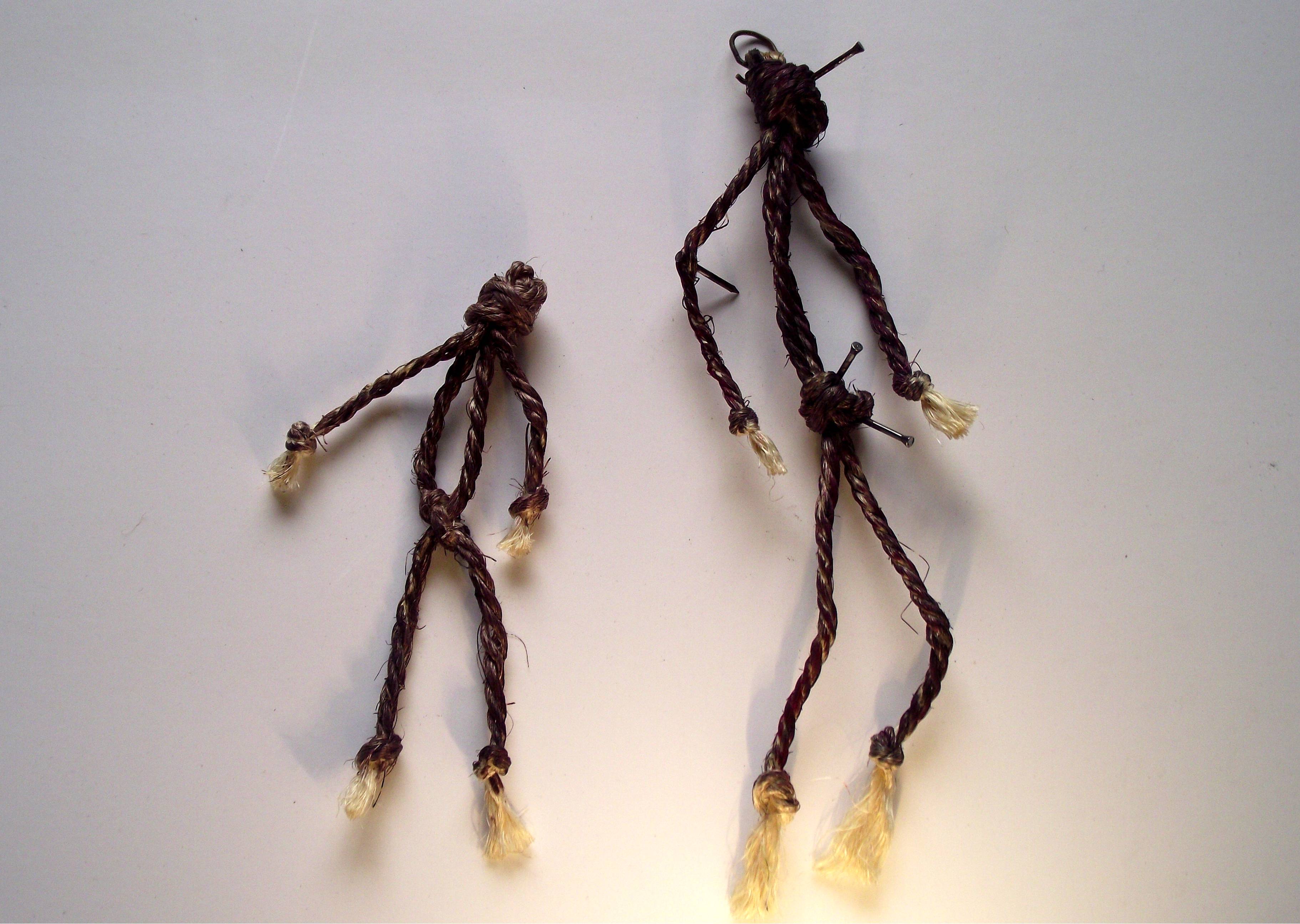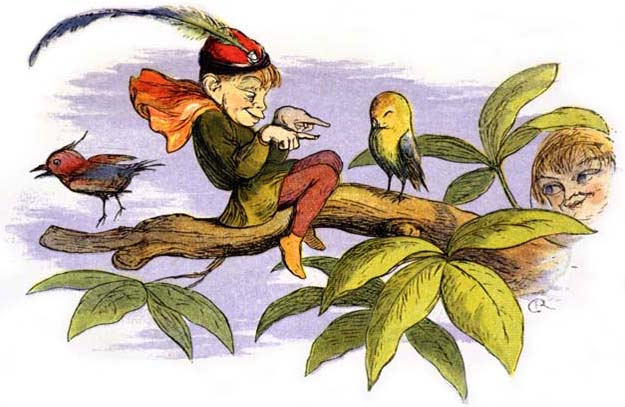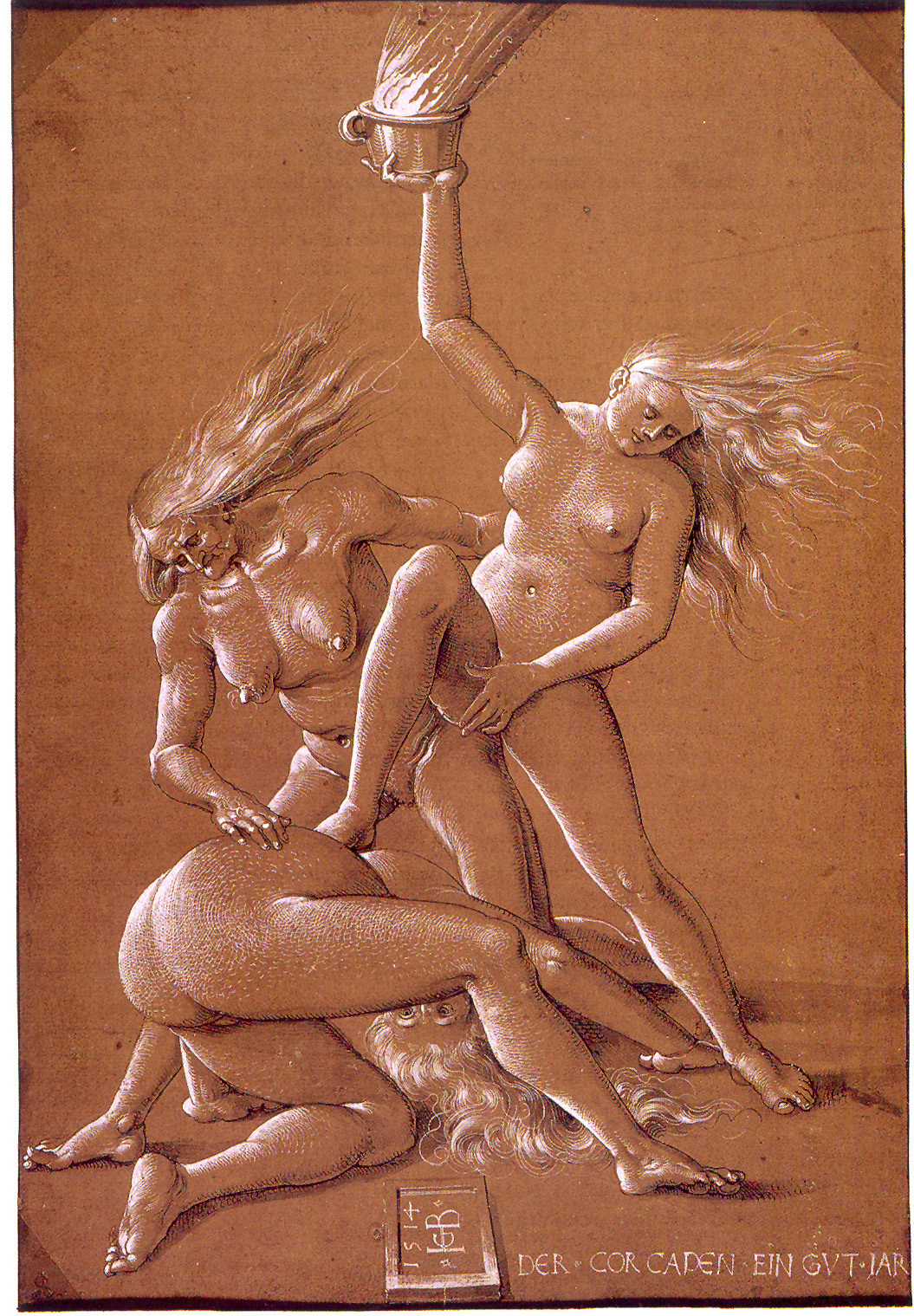|
Poppet
In folk magic and witchcraft, a poppet (also known as poppit, moppet, mommet or pippy) is a doll made to represent a person, for casting spells on that person or to aid that person through magic. They are occasionally found lodged in chimneys. These dolls may be fashioned from such materials as a carved root, grain or corn shafts, a fruit, paper, wax, a potato, clay, branches, or cloth stuffed with herbs with the intent that any actions performed upon the effigy will be transferred to the subject based on sympathetic magic. Poppets are also used as kitchen witch figures. Etymology The word ''poppet'' is an older spelling of ''puppet'', from Middle English ''popet'', meaning a small child or a doll. In British English it continues to hold this meaning. ''Poppet'' is also a chiefly British term of endearment or diminutive referring to a young child or girl, [...More Info...] [...Related Items...] OR: [Wikipedia] [Google] [Baidu] |
Dolls
A doll is a model typically of a human or humanoid character, often used as a toy for children. Dolls have also been used in traditional religious rituals throughout the world. Traditional dolls made of materials such as clay and wood are found in the Americas, Asia, Africa and Europe. The earliest documented dolls go back to the ancient civilizations of Egypt, Greece, and Rome. They have been made as crude, rudimentary playthings as well as elaborate art. Modern doll manufacturing has its roots in Germany, from the 15th century. With industrialization and new materials such as porcelain and plastic, dolls were increasingly mass-produced. During the 20th century, dolls became increasingly popular as collectibles. History, types and materials Early history and traditional dolls The earliest dolls were made from available materials such as clay, stone, wood, bone, ivory, leather, or wax. Archaeological evidence places dolls as the foremost candidate for the oldest known toy. Wo ... [...More Info...] [...Related Items...] OR: [Wikipedia] [Google] [Baidu] |
Kitchen Witch
A kitchen witch, sometimes called a cottage witch is a homemade poppet or doll resembling a stereotypical witch or crone displayed in residential kitchens as a good luck charm and to ward off bad spirits. History There is some debate over where the kitchen witch originated, some claiming Scandinavia and others Germany, but consensus points to older Northern European customs, as it seems to have been more widespread earlier. The poppet is supposed to depict a "good" witch who inspires productivity and safety in a kitchen, but also counteracts any ill-will directed to the home. It is considered good luck to give a kitchen witch to a friend or family member. So that those unfamiliar with the kitchen witch can understand its meaning, sometimes a note will be hung around the witch's neck stating something similar to: The Legendary Secret of Goof-Proof Cooking: The Famous Kitchen Witch For centuries, Norwegians have hung this good witch in their kitchen. They believe she has the powe ... [...More Info...] [...Related Items...] OR: [Wikipedia] [Google] [Baidu] |
Witch Dolls Poppets Curse
Witchcraft traditionally means the use of magic or supernatural powers to harm others. A practitioner is a witch. In medieval and early modern Europe, where the term originated, accused witches were usually women who were believed to have used malevolent magic against their own community, and often to have communed with evil beings. It was thought witchcraft could be thwarted by protective magic or counter-magic, which could be provided by cunning folk or folk healers. Suspected witches were also intimidated, banished, attacked or killed. Often they would be formally prosecuted and punished, if found guilty or simply believed to be guilty. European witch-hunts and witch trials in the early modern period led to tens of thousands of executions. In some regions, many of those accused of witchcraft were folk healers or midwives. European belief in witchcraft gradually dwindled during and after the Age of Enlightenment. Contemporary cultures that believe in magic and the supernat ... [...More Info...] [...Related Items...] OR: [Wikipedia] [Google] [Baidu] |
Witchcraft
Witchcraft traditionally means the use of magic or supernatural powers to harm others. A practitioner is a witch. In medieval and early modern Europe, where the term originated, accused witches were usually women who were believed to have used malevolent magic against their own community, and often to have communed with evil beings. It was thought witchcraft could be thwarted by protective magic or counter-magic, which could be provided by cunning folk or folk healers. Suspected witches were also intimidated, banished, attacked or killed. Often they would be formally prosecuted and punished, if found guilty or simply believed to be guilty. European witch-hunts and witch trials in the early modern period led to tens of thousands of executions. In some regions, many of those accused of witchcraft were folk healers or midwives. European belief in witchcraft gradually dwindled during and after the Age of Enlightenment. Contemporary cultures that believe in magic and the superna ... [...More Info...] [...Related Items...] OR: [Wikipedia] [Google] [Baidu] |
Sympathetic Magic
Sympathetic magic, also known as imitative magic, is a type of magic based on imitation or correspondence. Similarity and contagion James George Frazer coined the term "sympathetic magic" in '' The Golden Bough'' (1889); Richard Andree, however, anticipated Frazer, writing of sympathy-enchantment ( de , Sympathie-Zauber) in his 1878 ''Ethnographische Parallelen und Vergleiche''. Frazer subcategorised sympathetic magic into two varieties: that relying on similarity, and that relying on contact or "contagion": Imitation Imitation involves using effigies, fetishes or poppets to affect the environment of people, or people themselves. Voodoo dolls are an example of fetishes used in this way: the practitioner uses a lock of hair on the doll to create a link (also known as a "taglock") between the doll and the donor of this lock of hair. In this way, that which happens to the doll will also happen to the person. Correspondence Correspondence is based on the idea that one can influ ... [...More Info...] [...Related Items...] OR: [Wikipedia] [Google] [Baidu] |
Puppet
A puppet is an object, often resembling a human, animal or Legendary creature, mythical figure, that is animated or manipulated by a person called a puppeteer. The puppeteer uses movements of their hands, arms, or control devices such as rods or strings to move the body, head, limbs, and in some cases the mouth and eyes of the puppet. The puppeteer often speaks in the voice of the character of the puppet, and then synchronizes the movements of the puppet's mouth with this spoken part. The actions, gestures and spoken parts acted out by the puppeteer with the puppet are typically used in storytelling. Puppetry is a very ancient form of theatre which dates back to the 5th century BC in Ancient Greece. There are many different varieties of puppets, and they are made from a wide range of materials, depending on their form and intended use. They range from very simple in construction and operation to very complex. Two simple types of puppets are the finger puppet, which is a tiny p ... [...More Info...] [...Related Items...] OR: [Wikipedia] [Google] [Baidu] |
Hōko (doll)
A is a kind of soft-bodied doll given to young women of age and especially to pregnant women in Japan to protect both mother and unborn child. Traditionally, ''hōko'' dolls were made of silk and human hair, and stuffed with cotton. The dolls could be made for both boys and girls. Boys' dolls would be given up and "consecrated" at a shrine when boys came of age at 15 years old, while girls would give up their dolls at marriage. The dolls were given to children either at birth, or on special days shortly after birth. Pregnant woman would be given new ones, so as to protect her and her unborn child together, for the duration of the pregnancy. History ''Hōko'' can be traced back to "talismanic figures" from early Japanese history, and are likely related to the concept of using paper dolls (''hina''), as "stand-ins for people." The use of in spiritual practice as stand-ins to take on the brunt of a person's sins or misfortune also played a role in the creation of ''hōko'' dolls a ... [...More Info...] [...Related Items...] OR: [Wikipedia] [Google] [Baidu] |
English Folklore
English folklore consists of the myths and legends of England, including the English region's mythical creatures, traditional recipes, urban legends, proverbs, superstitions, and folktales. Its cultural history is rooted in Celtic, Christian, and Germanic folklore. During the Renaissance in the 16th century, England looked to more European texts to develop a national identity. English folklore has continued to differ according to region, although there are shared elements across the country. Its folktales include the traditional Robin Hood tales and the Brythonic-inspired Arthurian legend, and their stories often contained a moral imperative stemming from Christian values. The folktales, characters and creatures are often derived from aspects of English experience, such as topography, architecture, real people, or real events. History Before England was founded in the year 927, Wessex and its surrounding areas' cultures were transformed by the invasion of the Danish Kin ... [...More Info...] [...Related Items...] OR: [Wikipedia] [Google] [Baidu] |
Traditional Dolls
A tradition is a belief or behavior (folk custom) passed down within a group or society with symbolic meaning or special significance with origins in the past. A component of cultural expressions and folklore, common examples include holidays or impractical but socially meaningful clothes (like lawyers' wigs or military officers' spurs), but the idea has also been applied to social norms such as greetings. Traditions can persist and evolve for thousands of years—the word ''tradition'' itself derives from the Latin ''tradere'' literally meaning to transmit, to hand over, to give for safekeeping. While it is commonly assumed that traditions have an ancient history, many traditions have been invented on purpose, whether that be political or cultural, over short periods of time. Various academic disciplines also use the word in a variety of ways. The phrase "according to tradition", or "by tradition", usually means that whatever information follows is known only by oral tradition ... [...More Info...] [...Related Items...] OR: [Wikipedia] [Google] [Baidu] |
European Witchcraft
Belief in witchcraft in Europe can be traced to classical antiquity and has continuous history during the Middle Ages, culminating in the Early Modern witch trials and giving rise to the fairy tale and popular culture "witch" stock character of modern times, as well as to the concept of the "modern witch" in Wicca and related movements of contemporary witchcraft. In medieval and early modern Europe, accused witches were usually women who were believed to have used magic to cause harm and misfortune to members of their own community. Witchcraft was seen as immoral and often thought to involve communion with evil beings, such as a "Deal with the Devil". It was believed witchcraft could be thwarted by protective magic or counter-magic, which could be provided by the cunning folk. Suspected witches were also intimidated, banished, attacked or lynched. Often they would be formally prosecuted and punished if found guilty. European witch-hunts and witch trials in the early modern peri ... [...More Info...] [...Related Items...] OR: [Wikipedia] [Google] [Baidu] |
Anthropology
Anthropology is the scientific study of humanity, concerned with human behavior, human biology, cultures, societies, and linguistics, in both the present and past, including past human species. Social anthropology studies patterns of behavior, while cultural anthropology studies cultural meaning, including norms and values. A portmanteau term sociocultural anthropology is commonly used today. Linguistic anthropology studies how language influences social life. Biological or physical anthropology studies the biological development of humans. Archaeological anthropology, often termed as 'anthropology of the past', studies human activity through investigation of physical evidence. It is considered a branch of anthropology in North America and Asia, while in Europe archaeology is viewed as a discipline in its own right or grouped under other related disciplines, such as history and palaeontology. Etymology The abstract noun ''anthropology'' is first attested in reference t ... [...More Info...] [...Related Items...] OR: [Wikipedia] [Google] [Baidu] |
Amulets
An amulet, also known as a good luck charm or phylactery, is an object believed to confer protection upon its possessor. The word "amulet" comes from the Latin word amuletum, which Pliny's ''Natural History'' describes as "an object that protects a person from trouble". Anything can function as an amulet; items commonly so used include statues, coins, drawings, plant parts, animal parts, and written words. Amulets which are said to derive their extraordinary properties and powers from magic or those which impart luck are typically part of folk religion or paganism, whereas amulets or sacred objects of formalised mainstream religion as in Christianity are believed to have no power of their own without faith in Jesus and being blessed by a clergyman, and they supposedly will also not provide any preternatural benefit to the bearer who does not have an appropriate disposition. Talisman and amulets have interchangeable meaning. Amulets refer to any object which has the power to ave ... [...More Info...] [...Related Items...] OR: [Wikipedia] [Google] [Baidu] |






